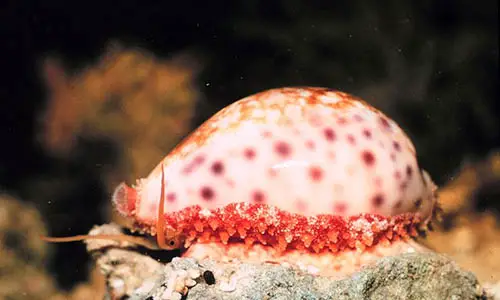Mollusks are interesting creatures that are found almost in all kinds of weathers with or without shells. Snails, squids, shellfish and their relatives belong to the mollusk group.
Fact 1 – Description
Mollusks are soft-bodied invertebrates that have shells to protect them. There are some without shells. Slugs, snails, clams, squids, mussels and octopuses come under the mollusk category of animal kingdom. They have muscular feet for burrowing or creeping beside the shells. Some also have heads with sense organs. Inside the soft body, there are the lungs or gills for breathing and the digestive and reproductive parts which are enclosed by a skin-like organ called the mantle. Mollusks have a rasping tongue armed with tiny teeth. This helps the creatures to scrape tiny plants and animals off the rocks or tear food into pieces. Oysters and mussels filter the food particles from the water with their gills.
Fact 2 – Classification of Mollusks
There are more than 70,000mollusk species and they are split up into four main categories namely:
1. Gastropods which is the largest class and includes snails, slugs, winkles, limpets and whelks.
2. Bivalves include scallops, oysters and clams.
3. Cephalopods include squid, octopuses, cuttlefish and chitons.
4. Smaller groups comprise of tusk shells and the oval mollusks with jointed plates.
Fact 3 – Specialty of The Shells
The shells of the mollusks are made of a chalky material known as calcium carbonate. The shell has three layers namely the tough outer shell, the middle shell is chalky and the inner layer that lies next to the animals skin is shiny that is called a mother-of-pearl in some bivalve mollusks. These shells are of various shapes and sizes but their main function is to provide a hiding place for them in times of danger. Mollusks that live on land use the shells to prevent drying out of the moist, soft-bodied creatures.
Fact 4 – How Mollusks Make Their Shells
A mollusk’s skin or mantle releases liquid shell materials. When they come in contact with water or air they become hard. Gastropod and nautilus shells grow from their outermost edges. As days go by and the mollusks grow older, the shell develops more whorls or single turns in a spiral shell. In bivalves however, new shell materials are deposited on the edge that is farthest from the hinge.
Fact 5 – Their Food Habits
Mollusks are mostly aquatic creatures although some live on land too. Bivalves feed on organic materials found in the water and the detritus floating which they suck through a siphon frayed at the shell edges. The water that is released through the siphon is small. The Caudofoveata looks like a worm and feeds on microorganisms and other organic materials that float on the sea floor. The body has a covering of protective hard scaly skin. The Scaphopoda lives buried in sediments and eat the Foraminifera which is a type of protozoa. They catch them with their trunks and tentacles and then hit their heads with their radula. The Solenogastra do not have shells and look like flat worms. They eat polyps.
Fact 6 – Specialty About The Tentacles Of Mollusks
The Cephalopod have specialized tentacles around the mouth. Squids have a parrot-like beak and al octopuses are poisonous. They have eight tentacles, squids and cuttlefish have two more that are longer than the other tentacles with which they spring forward to catch their prey. The ancient living cephalopod named Nautilus has ninety tentacles and the shell is fully developed like the shells of snails. They use them for resting and floating.
Fact 7 – Uses of Mollusks.
Mollusks have large neurons and the sea hare is used in the study of memory loss. Mussels, squids and shellfish contain anti-bacterial and anti-viral chemicals and fresh-water mussels contain anti-cancer chemicals.











Leave a Reply